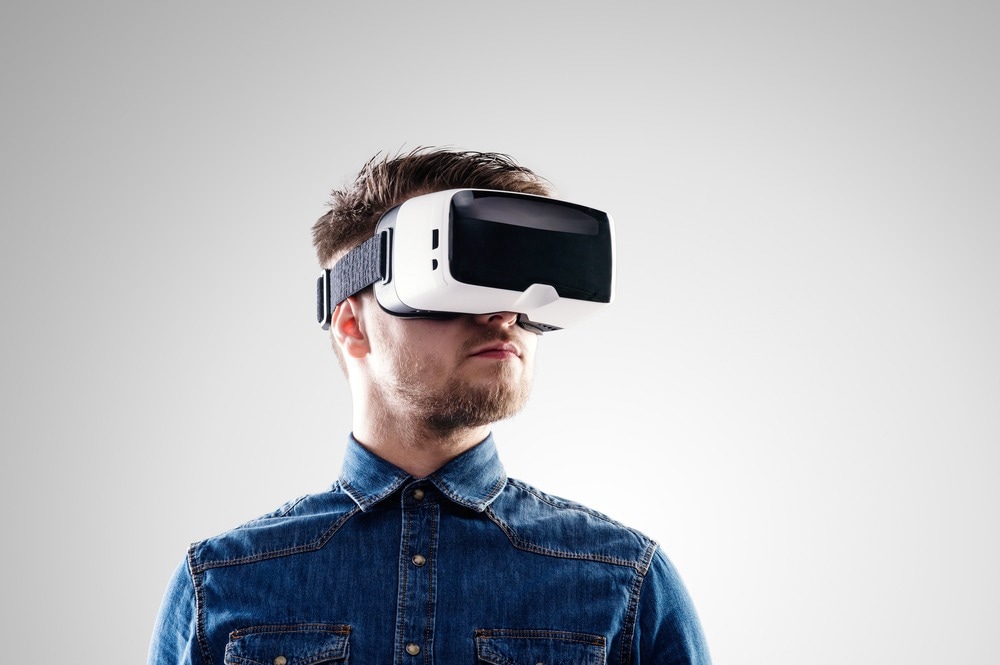In a recent study published in PLOS Digital Health, researchers assessed the feasibility and efficacy of virtual reality (VR) as a non-pharmaceutical intervention for managing procedural pain in adult burn patients during dressing changes compared to standard opioid-based approaches. They also derived insights for optimizing future VR pain management studies.
 Study: Pilot randomized clinical trial of virtual reality pain management during adult burn dressing changes: Lessons learned. Image Credit: Ground Picture/Shutterstock.com
Study: Pilot randomized clinical trial of virtual reality pain management during adult burn dressing changes: Lessons learned. Image Credit: Ground Picture/Shutterstock.com
Background
Burn injuries, prevalent and painful, often require opioids, intensifying concerns amidst the opioid crisis. Over 200,000 cases in the United States (U.S.) in 2020 highlight the urgency for effective, balanced pain management solutions. VR emerges as a promising, non-pharmaceutical intervention, proven in pediatric pain management, creating immersive distractions with minimal side effects and diminishing pain and anxiety.
However, the efficacy of VR in adults remains under-explored, necessitating further research, especially considering the urgency imposed by the ongoing opioid epidemic and the risk of long-term opioid use, to validate its impact and optimize its application.
About the study
Conducted between May 2019 and February 2020 at a verified Burn Center, the present pilot study included participants aged 18-70 needing daily opioid-administered dressing changes for recent burns, no older than four days. Those with facial burns, cognitive or motor impairments, prisoners, non-English speakers, pregnant women, and intensive care patients were excluded.
The Ohio State University managed ethical approvals, securing informed consent and registering the trial belatedly on ClinicalTrials.gov (NCT04545229). This study, foregoing formal power and sample size calculations, intended to generate initial data, with 14 of 33 eligible participants enrolled and assigned to passive VR, active VR, or standard care groups. The coronavirus disease 2019 (COVID-19) outbreak and subsequent hospital restrictions led to the early termination of the study in March 2020.
The researchers meticulously documented each step of the intervention, from initial clinician-documented demographics and injury information to post-intervention pain and VR experience evaluation self-assessments. The Virtual Reality Pain Alleviation Treatment (VR-PAT) utilized a game developed by Nationwide Children's Hospital, paired with lightweight VR headsets and an iPhone, offering both interactive and passive experiences based on the treatment group. Standard care participants received routine distractions such as music and conversation.
Data collected covered demographics, expectations, injury details, anxiety levels, pain levels, VR engagement, nurse perceived utility, VR experience evaluations, and opioid use, with a follow-up after discharge assessing continued opioid use. This meticulous documentation aimed to offer an encompassing overview of the intervention's different aspects and impacts.
The collected data offered insights into the efficacy of VR-PAT in pain management and its user-friendliness and overall experience from both the patient's and the nursing staff's perspectives.
Study results
In the present study, 14 participants had a median age of 38.4 years, with a majority being male (71.4%) and White (85.7%). The burn injuries of the participants ranged from 1.0% to 17.8% of Total Body Surface Area (TBSA), with the median at 8.4%, and primarily consisted of partial-thickness burns, while the most extensive full-thickness burn recorded was 3.0% TBSA.
When considering self-reported pain, participants in the active VR-PAT group reported the lowest average overall pain with scores of 41.3, 61.0, and 72.7 (mean Visual Analog Scale (VAS) score) for the three successive dressings. Conversely, those in the passive VR group reported the highest overall pain scores – 58.3, 74.5, and 89.0, respectively. The active VR group also reported the least severe pain during the first and last dressing changes, while the control group reported the least during the second dressing change. Participants in the passive VR group reported consistently higher levels of severe pain during the first two dressings and were on par with the control group during the last dressing.
In the study, the control group had longer dressed durations for the initial two sessions, with median times of 59 and 60 minutes, in contrast to the active and passive groups. Surprisingly, the control group utilized the lowest quantity of opioids, measured in morphine milligram equivalents (MME) at 56.25 and 19.0, while the passive group used the most, with MMEs of 106.25 and 91.5. For the third session, however, the control group recorded the shortest dressing time, a median of 49 minutes, versus 51 and 64 minutes in the active and passive groups, respectively.
The collected data highlights the complexities and possible impacts of employing VR in pain management for burn patients. The varying self-reported pain levels among the active and passive VR groups are significant, laying the groundwork for future in-depth research to refine VR's role in pain management and potentially minimize opioid dependence and associated risks.